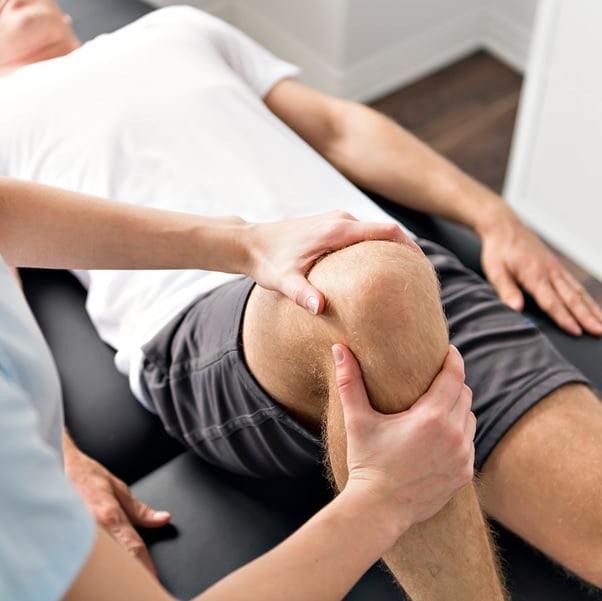
Shoulder and knee pain can significantly impact your daily life, hindering mobility and limiting your ability to engage in activities you enjoy. Fortunately, physiotherapy offers effective techniques to alleviate pain, improve strength, and restore function in these critical joints. In this article, we will explore the world of shoulder and knee physiotherapy, providing valuable insights, tips, and self-care practices to help you navigate your recovery journey with confidence.
Understanding Shoulder Physiotherapy
Shoulder pain can arise from various conditions, such as rotator cuff injuries, frozen shoulder, or tendonitis. Physiotherapy for the shoulder focuses on relieving pain, restoring range of motion, and strengthening the surrounding muscles. A skilled physiotherapist will assess your specific condition and develop a personalised treatment plan tailored to your needs. Common techniques used in shoulder physiotherapy include:
Manual Therapy
Hands-on techniques, such as joint mobilisations and soft tissue mobilisation, aim to restore normal joint mechanics, reduce pain, and improve shoulder mobility.
Strengthening Exercises
Targeted exercises designed to strengthen the muscles around the shoulder joint, including the rotator cuff muscles, can enhance stability and support proper shoulder function.
Range of Motion Exercises
Gentle stretching and range of motion exercises help improve flexibility, reduce stiffness, and restore normal shoulder movement.
Posture Correction
Addressing poor posture habits and providing guidance on maintaining proper alignment can relieve strain on the shoulder joint and prevent future injuries.
Insights for Effective Knee Pain Physiotherapy
Knee pain can stem from conditions such as ligament injuries, arthritis, or patellofemoral pain syndrome. Physiotherapy for knee pain focuses on reducing pain, improving knee stability, and enhancing overall function. Here are some essential insights to consider for effective knee pain physiotherapy:
Targeted Exercise Programs
A physiotherapist will design an exercise program specific to your knee condition, including strengthening exercises for the quadriceps, hamstrings, and other muscles supporting the knee joint. These exercises aim to improve stability, reduce pain, and enhance knee function.
Manual Therapy Techniques
Depending on the underlying cause of your knee pain, manual therapy techniques such as joint mobilisations, soft tissue massage, and trigger point release may be incorporated to alleviate pain and improve joint mobility.
Gait Analysis and Biomechanical Assessment
Your physiotherapist may analyse your walking and running patterns to identify any biomechanical issues that contribute to knee pain. They can then recommend modifications to improve your movement mechanics and reduce strain on the knee joint.
Taping and Bracing
In some cases, taping or bracing the knee can provide additional support, stability, and pain relief during physical activities. Your physiotherapist can guide you on the proper application and use of such aids.
Self-Care Practices for Shoulder and Knee Pain Relief

In addition to knee and shoulder physiotherapy sessions, adopting self-care practices can significantly contribute to your recovery and pain management. Consider the following tips:
Rest and Ice
Applying ice packs to the affected area for 15-20 minutes, several times a day can help reduce inflammation and alleviate pain. Ensure you allow sufficient rest to allow your joints and muscles to heal.
Gradual Exercise Progression
As you engage in prescribed exercises, follow a gradual progression, increasing intensity and duration as advised by your physiotherapist. This approach helps prevent overexertion and promotes steady improvement.
Proper Body Mechanics
Pay attention to your posture and body mechanics during daily activities. Maintain good alignment, lift objects correctly, and avoid repetitive motions that may strain your shoulder or knee.
Weight Management
If overweight, strive for healthy weight management to reduce the load on your joints, particularly the knees. Consult a healthcare professional for guidance on diet and exercise tailored to your needs.
Conclusion:
Shoulder and knee physiotherapy offers effective solutions for managing pain, improving mobility, and enhancing the quality of life. By understanding the principles and techniques of shoulder and knee physiotherapy, adhering to expert advice, and incorporating self-care practices, you can optimise your recovery journey and regain pain-free function. Remember, always consult a qualified physiotherapist to assess your specific condition and receive personalised guidance for the best outcomes. Visit The Movement Laboratory for quality physiotherapy services in Singapore.




















